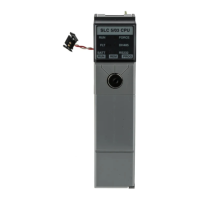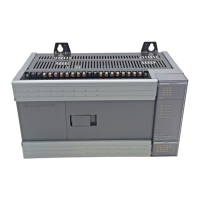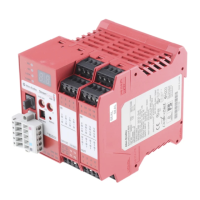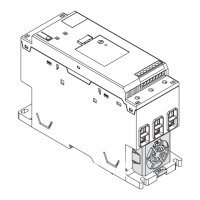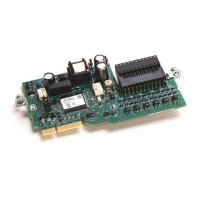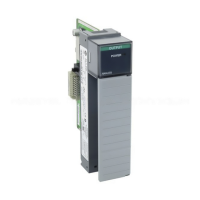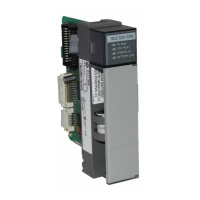7–4
Wiring Your I/O Modules
Publication
1747-6.2
Careful wire routing within the enclosure helps to cut down electrical
noise between I/O lines. Follow these rules for routing your wires:
• Route incoming power to the controller by a separate path from
wiring to I/O devices. Where paths must cross, their intersection
should be perpendicular.
Important: Do not run signal or communications wiring and
power wiring in the same conduit.
• If wiring ducts are used, allow for at least two inches between I/O
wiring ducts and the controller. If the terminal strips are used for
I/O wiring, allow for at least two inches between the terminal
strips and the controller.
• Limit the cable length for the TTL input module to 15.24 m
(50 ft) per point and 3.05 m (10 ft) per point for the TTL output
module. Use low power DC I/O wiring even though it is less
tolerant to electrical noise.
!
ATTENTION: Handle the TTL module by its ends,
not metallic surfaces. Electrostatic discharges can
damage the module. Do not expose the TTL module to
electrostatic charges.
• Segregate I/O wiring by signal type. Bundle wiring with similar
electrical characteristics together.
Wires with different signal characteristics should be routed into the
enclosure by separate paths. Refer to Allen-Bradley Programmable
Controller Grounding and Wiring Guidelines, Publication Number
1770-4.1.
!
ATTENTION: If the controller is being installed
within a potentially hazardous environment (that is,
Class I, Division 2), all wiring must comply with the
requirements stated in the National Electrical Code
501-4 (b).
Preparing Your Wiring
Layout
AB PLCs
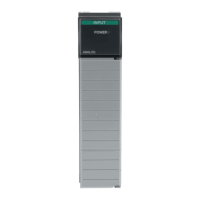
